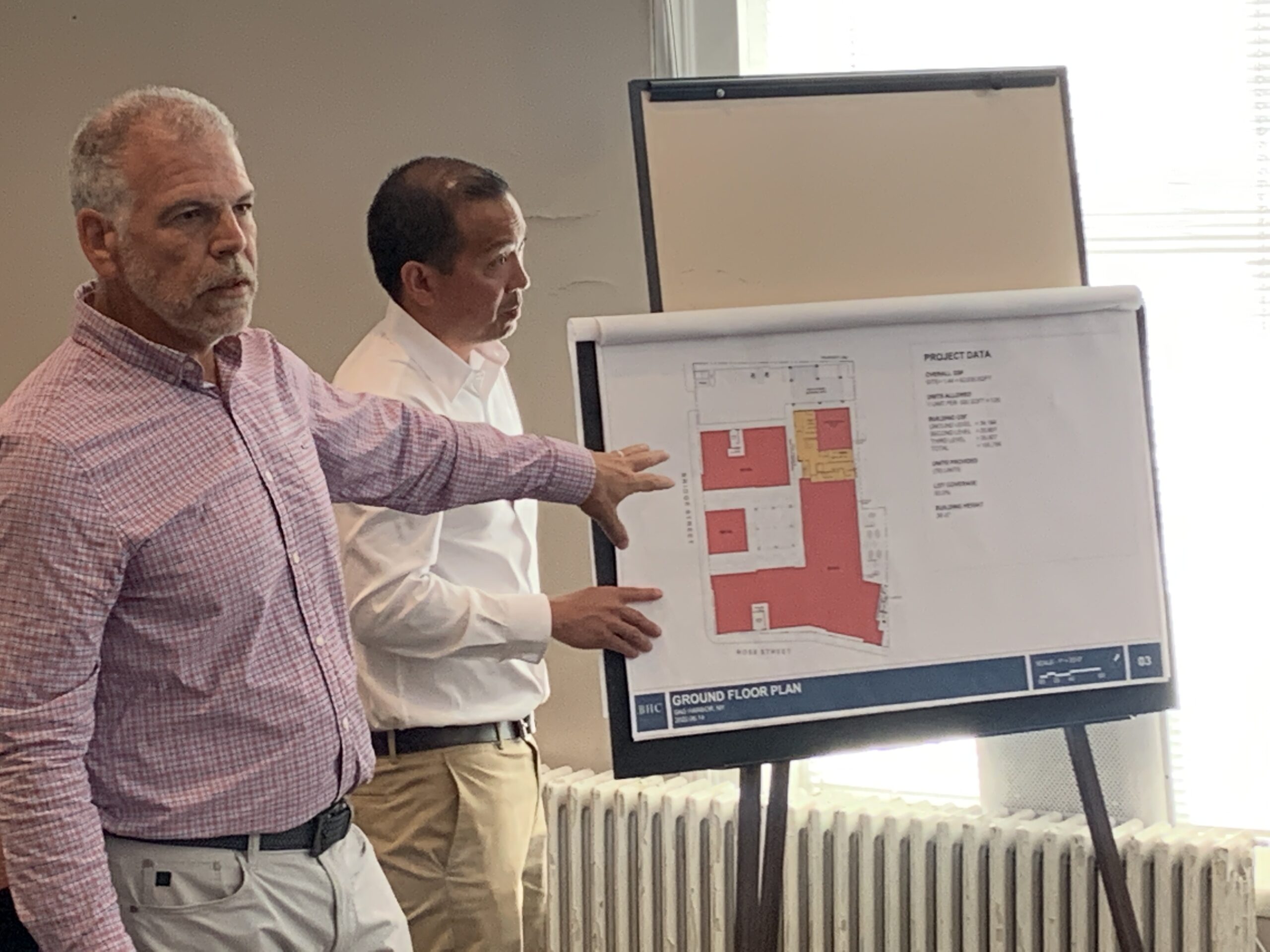
The developers of a proposal to wed 79 upper-floor affordable apartments with approximately 29,000 square feet of ground-floor commercial space in the heart of Sag Harbor gave the Village Board a first peak at their plans on Friday.
Both village officials and the development team’s representatives acknowledged during a cordial 45-minute meeting that the project — the largest in the village since the former Bulova factory was converted into the Watchcase condominiums — would face a long and comprehensive review process that will include stops before each of the village’s regulatory boards and the Village Board itself.
“I think this is a great project, and I’m hoping that everyone is able to keep an open mind,” said attorney Tiffany Scarlato, who represents Adam Potter, the developer behind the proposal. “We understand we have a large hill to climb. It’s a big project. It’s going to require a lot of work.”
But Scarlato added that the development was “a very careful balance of how many units and how many square feet of retail space is needed for the project to work. I want the board to understand moving into this that although we may be able to withstand some small changes, any significant changes to the size of the project will definitely impact the viability of the project.”
Potter came into prominence in the village as the chairman of Friends of Bay Street, the nonprofit that purchased the Water Street Shops building and the former home of 7-Eleven as a new home for Bay Street Theater in 2020. Early in 2021, Potter began to acquire several other parcels in the area south of the Sag Harbor Post Office and the gas ball parking lot bound by Rose and Bridge streets with the stated purpose of finding new space for businesses that would be displaced when a new theater was built.
He pivoted his plans to include affordable apartments when Mayor Jim Larocca and the Village Board announced last year they would make the issue a priority.
“I don’t think I need to address the need for affordable housing in the village,” Scarlato said. “I think it’s very obvious to everyone.” She noted that she had recently lost a paralegal who had to move out of town when her parents sold their house.
Board members listened to an overview of the plans offered by Salvatore Coco, a principal in BHC Architects, a Melville firm that will handle the design of the complex. Most of the development would be limited to a single building that would stretch from the site of the Collette Home consignment shop behind the municipal parking lot south to Rose Street and west along Bridge Street. A second, one-story commercial building would be constructed on Bridge Street with a lawn behind it.
Coco said architects took their design cues from the existing village streetscape. “We are not looking at cutting-edge architecture,” he said. “We are looking at architecture that complements the existing Main Street.”
Besides the ground-floor commercial space, the plans call for 62 one-bedroom apartments ranging in size from about 700 to 750 square feet and 17 two-bedroom units ranging from about 850 to 950 square feet.
“It’s high-quality, affordable housing and the highest and best use in this location,” Coco added.
Although Larocca had some questions about design features and the long-term financial viability of the project, the board mostly focused on the process the application would follow.
Village Attorney Elizabeth Vail said the project would be reviewed by all the village’s regulatory boards including the Planning Board, the Zoning Board of Appeals, the Board of Historic Preservation and Architectural Review, and the Harbor Committee. It will also require a special exception permit from the Village Board, a new requirement for major developments in the Waterfront Overlay District, which was established last year.
Vail added that the application had to be reviewed first by the village’s planning consultants, Nelson Pope Voorhis, to determine if the application is complete. Once that is done, the official review process will begin.